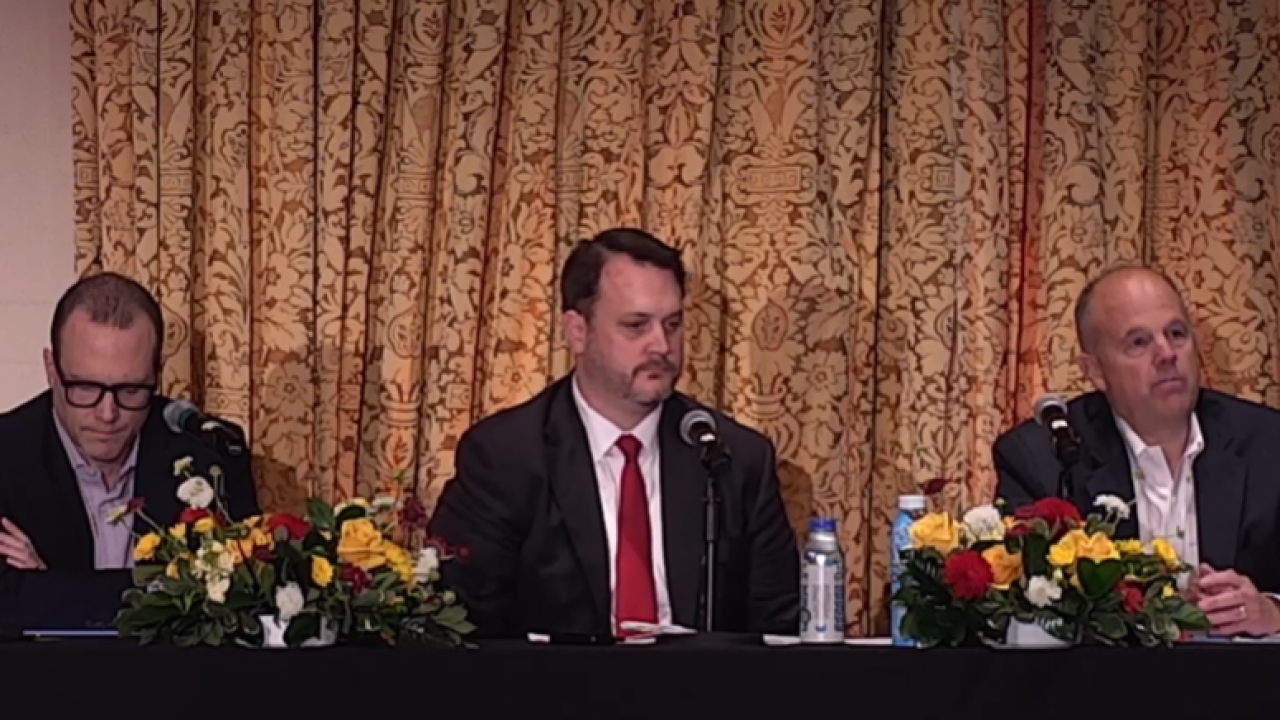by Roger Russell
The sweeping Tax Reform Act of 2001 will muddy the waters for computing the earned-income tax credit in the coming tax season, according to practitioners and Internal Revenue Service officials.
"When we initially looked at the changes, it seemed like ‘Wow - these are really simplifications,’" said H&R Block director of research Karen Yeager. "But as we look a little deeper, we see some complexities that begin to surface and also some situations where in the past the person wouldn’t be allowed the credit but now would be allowed it."
Changes that take effect in tax year 2002 include:
- A new definition of earned income will no longer include employee compensation that is nontaxable;
- The qualifying child relationship and abode tests have changed;
- The phase-out has been increased for joint filers;
- The EIC is now figured using adjusted gross income (not modified AGI);
- The reduction in the credit for alternative minimum tax is gone; and,
- The tie-breaker rules have changed.
The most significant of these are the definition of earned income, the changes to the tests for qualified child, and the tie-breaker rules, according to Karin Loverud, senior advisor in the Office of the IRS Chief Counsel.Under the old law, for tax years beginning before 2002, when two or more taxpayers had the same qualifying child, only the individual with the highest modified AGI was entitled to the EIC based on that child. Now, for 2002 and later tax years, the tie-breaker rules are applied when two or more taxpayers have the same qualifying child, but only when two or more taxpayers actually claim the credit based on that child.
In effect, the tie-breaker rules now allow taxpayers with the same qualifying child to agree among themselves who will receive the credit on the basis of that qualifying child.
Under the new rules, a family in which child, parent and grandparent live together can choose who gets the credit - the parent or a grandparent. If more than one person qualifies, they can even decide to split the credit, said Loverud. "Suppose the mother has four children and lives with her mother; the mother can take the credit for two children and her mother - the grandparent - can take the credit for the other two."
If more than one taxpayer claims the credit based on the same child, the new rules pick the winner.
For example, the parent, if one taxpayer is a parent of the child; the taxpayer with the higher AGI, if neither is a parent of the child; the parent whom the child lived with the longest during the tax year if both taxpayers are parents of the child, and they do not file a joint return together; or the parent with the higher AGI, if the child lived with both parents for the same length of time during the tax year, and they do not file a joint return together.
The IRS offers these examples to show the tie-breaker rules in action:
• Alice is your client and the grandparent of Bobby. Bobby is a qualifying child of Alice. In completing Form 8867 for tax year 2002, you determine (1) Bobby is also a qualifying child of Carla, (2) Carla is Bobby’s parent, and (3) Carla is claiming the EIC based on Bobby. You may not prepare a return for Alice claiming the EIC on the basis of Bobby.
• Dan is your client and the parent of Eddie. Eddie is a qualifying child of Dan. In completing Form 8867, you determine (1) Eddie is also a qualifying child of Frances, (2) Frances is Eddie’s grandparent, and (3) Frances is claiming the EIC based on Eddie. You may prepare a return for Dan claiming the EIC on the basis of Eddie.
• Gertrude is your client and the mother of Henrietta. Henrietta is a qualifying child of Gertrude. In completing Form 8867, you determine (1) Henrietta is also a qualifying child of Isaac, (2) Isaac is Henrietta’s father, (3) Henrietta lived with Isaac for seven months and with Gertrude for the entire year, and (4) Isaac is claiming the EIC based on Henrietta. You may prepare a return for Gertrude claiming the EIC on the basis of Henrietta.
"It’s not clear that they thought this thing through completely," said Connie Kurtz, vice president of Rockville, Md.-based Tax-Masters. "If there’s a husband, a wife, and a grandmother involved, what happens if all three claim the same kid Ñ because of the confidentiality rules, the others won’t know. It’s entirely possible that this will happen Ñ the person who files first is the first to get the credit, and they’ll have to fight it out down the road."
Although the due diligence requirements themselves have not changed, their effect is magnified when applied in tandem with the new tie-breaker rules.
The due diligence regs say that a preparer must satisfy four requirements:
1. Complete Form 8867;
2. Complete the appropriate EIC worksheet in the Form 1040 instructions;
3. Not know or have reason to know that any information used by the preparer in determining the taxpayer’s eligibility for, or the amount of, the EIC is incorrect; and,
4. Retain a record of the worksheet and checklist used to determine the EIC and a record of the source of the information used to complete them.
Yeager said the rules are hazy in situations where more than one person claims the same child for the EIC. "A preparer might do the grandmother’s return, then four or five hundred returns later, they do the mother’s return. It’s entirely possible they won’t remember doing the grandmother’s return."
When a preparer knows that another taxpayer with a superior right to claim the credit based on the child has already done or intends to do so, the preparer will be penalized $100 per return.
Kurtz has this advice: "A lot of preparers are having people sign due diligence checklists as they prepare the return. Although it’s not required, this gives them added protection in case something should come back from the IRS."





